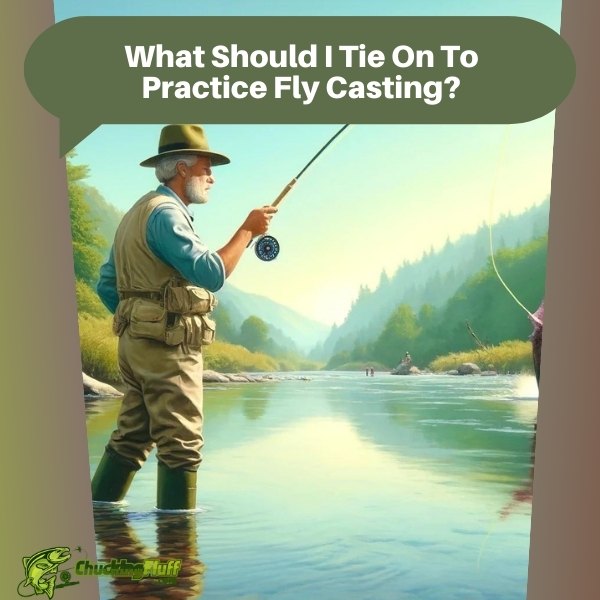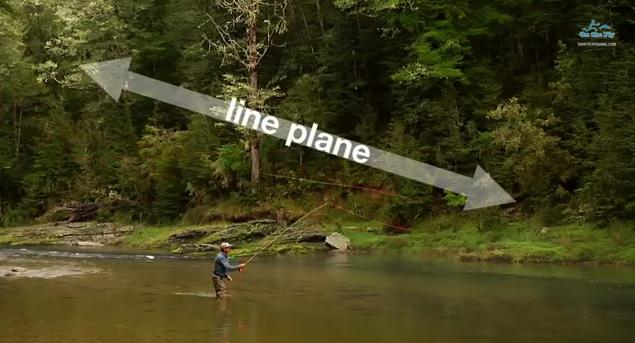| Disclosure: Just to be open and honest the buttons and links you click on in the website will in most cases take you to another website where you can purchase the products I am reviewing. As an Amazon Associate I earn from qualifying purchases. |
What Should I Tie On To Practice Fly Casting?

Fly casting is an elegant dance between angler and nature, a delicate art form where the flick of a wrist and the whisper of a line create a symphony on the water. Whether you’re a seasoned angler honing your skills or a novice taking your first tentative steps into the world of fly fishing, the question inevitably arises: What should I tie on to practice fly casting?
Quick Post Navigation
- Understanding Fly Casting
- Choosing the Right Fly for Practice
- Dry Flies
- Wet Flies
- Streamer Flies
- Nymph Flies
- Choosing the Best Fly for You
- Practical Tips for Fly Casting Practice
- Improving Accuracy and Distance
- Common Mistakes to Avoid
- Patience and Persistence
- Seeking Guidance
- The Joy of Fly Casting
- Conclusion
- FAQs:
- “Check out some of our other Buying Guides”
Understanding Fly Casting
Before we delve into the realm of practice flies, let’s take a moment to appreciate the essence of fly casting itself. Unlike conventional fishing methods that rely on the weight of the lure to carry the line, fly casting utilizes the weight of the fly line to deliver the fly to its target. It’s a skill that requires finesse, precision, and a deep connection with the rhythm of the water.
Choosing the Right Fly for Practice
When it comes to choosing a fly for practice, several factors come into play. The type of fly you select will depend on various variables, including your skill level, casting environment, and personal preferences. Let’s explore some common options:
Dry Flies
Dry flies mimic the appearance of insects that float on the water’s surface, making them ideal for targeting fish that feed on the surface. They are lightweight and delicate, requiring subtle presentations to entice wary trout. For practice purposes, dry flies offer the advantage of visibility, allowing anglers to track their movements and refine their casting technique with precision.
Wet Flies
Wet flies are designed to imitate insects that reside below the water’s surface, making them suitable for targeting fish feeding beneath the surface film. They have a more substantial profile than dry flies, providing a satisfying weight to the line during casting. While wet flies may not offer the same visibility as dry flies, they are excellent for practicing the art of line control and mastering the dynamics of underwater presentations.
Streamer Flies
Streamer flies are characterized by their long, flowing materials that mimic the appearance of baitfish or other aquatic prey. They are typically larger and heavier than dry or wet flies, making them ideal for targeting larger predatory species such as trout, bass, and pike. For practice purposes, streamer flies offer the opportunity to develop strength and accuracy in casting, as well as mastering the art of imparting lifelike action to the fly.
Nymph Flies
Nymph flies represent the aquatic larval stage of insects and are designed to be fished beneath the surface. They are typically small, weighted flies that imitate the natural movement of insects as they drift along the river bottom. Nymph fishing requires subtle presentations and precise control of the fly’s drift, making it an excellent choice for honing casting skills in challenging fishing conditions.
Choosing the Best Fly for You
Ultimately, the best fly for practice is the one that resonates with you on a personal level. Whether you prefer the delicate dance of a dry fly on the water’s surface or the rhythmic pulse of a streamer cutting through the current, experimentation is key to finding the perfect fit. Take the time to explore different types of flies, observe how they behave on the water, and trust your instincts to guide you toward the right choice.
Practical Tips for Fly Casting Practice
Once you’ve selected your practice fly, it’s time to hit the water and hone your casting skills. Here are some practical tips to help you make the most of your practice sessions:
- Set up a designated practice area free from obstacles and distractions.
- Start with short, controlled casts before gradually increasing distance and complexity.
- Focus on mastering the fundamentals of fly casting, such as timing, line control, and presentation.
- Experiment with different casting techniques, including overhead casts, roll casts, and sidearm casts.
- Practice regularly and maintain a positive mindset, embracing both successes and setbacks as opportunities for growth.
Improving Accuracy and Distance
As you progress in your fly casting journey, you’ll undoubtedly seek to improve both the accuracy and distance of your casts. Here are some techniques to help you reach new heights:
- Practice casting to specific targets, such as floating leaves or submerged markers, to develop pinpoint accuracy.
- Experiment with different casting angles and trajectories to understand how they affect the distance and direction of your casts.
- Utilize casting drills and exercises, such as the double haul or reach cast, to increase line speed and casting efficiency.
- Focus on smooth, fluid casting motions, minimizing unnecessary movements and maximizing the energy transfer from rod to line.
Common Mistakes to Avoid
In the pursuit of fly casting perfection, it’s essential to be mindful of common pitfalls that can impede your progress. Here are some mistakes to watch out for:
- Overpowering your casts with excessive force, leading to poor accuracy and control.
- Casting with a stiff, rigid wrist, inhibiting the fluid motion required for smooth, efficient casting.
- Failing to adjust your casting technique to suit changing environmental conditions, such as wind or obstructions.
- Neglecting proper line management techniques, resulting in tangled lines and frustrated anglers.
Patience and Persistence
Like any skill worth mastering, fly casting requires patience, perseverance, and a willingness to embrace the journey. There will be days when your casts soar effortlessly through the air, and days when they fall short of your expectations. But through it all, remember that every cast is a step forward, every setback an opportunity to learn and grow. So cast with courage, cast with conviction, and let the rhythm of the water guide you on your quest for mastery.
Seeking Guidance
While practice is essential for developing your casting skills, don’t hesitate to seek guidance from experienced anglers who can offer valuable insights and advice. Whether through books, videos, or hands-on instruction, learning from those who have walked the path before you can accelerate your progress and deepen your understanding of the art and science of fly casting.
The Joy of Fly Casting
In the end, fly casting is not merely a means to an end but a journey of discovery, a communion with nature, and a celebration of the human spirit. It’s the thrill of feeling the line come alive in your hands, the satisfaction of watching your fly dance upon the water, and the profound sense of connection that comes from immersing yourself in the timeless rhythms of the river. So embrace the challenge, savor the moments, and let the magic of fly casting carry you away on wings of wonder.
Conclusion
In the grand tapestry of angling pursuits, fly casting stands as a testament to the beauty of simplicity, the power of precision, and the boundless potential of the human spirit. So tie on your practice fly, step onto the water’s edge, and let the journey begin. For in the dance between angler and nature, there are no limits, only possibilities waiting to unfold.
FAQs:
Q) What is the best type of fly for beginners to practice fly casting with?
A)The best type of fly for beginners to practice with is often a dry fly, as it offers excellent visibility and feedback during casting.
Q) How often should I practice fly casting to see improvement?
A) It’s recommended to practice fly casting regularly, ideally several times a week, to see significant improvement in your skills over time.
Q) Are there any specific drills or exercises I can do to improve my fly casting technique?
A) Yes, there are many drills and exercises designed to improve fly casting technique, including the double haul, reach cast, and accuracy casting to specific targets.
Q) What should I do if I keep getting tangled lines during practice?
A) If you’re experiencing tangled lines during practice, take a step back and focus on improving your line management techniques, such as false casting and line mending.
Q) How long does it typically take to become proficient at fly casting?
A) The time it takes to become proficient at fly casting varies from person to person, depending on factors such as natural ability, dedication to practice, and access to instruction. With regular practice and patience, most anglers can expect to see significant improvement within a few months to a year.



